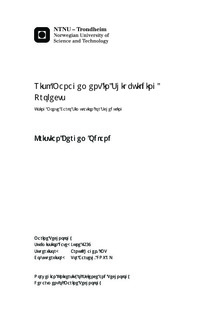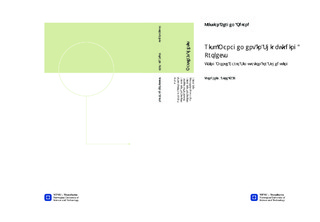| dc.description.abstract | The main objective of this thesis was to identify potential improvements of the risk management process to DNV GL so that it is best fit at identifying risk of time overruns and estimating project duration. Focus was placed on studying the following three aspects of risk management: 1) Scheduling method used to estimate project duration, 2) Quantification of uncertainties and 3) Monte Carlo simulation.
The theoretical framework underlying the DNV GL method was identified by comparing the theoretical framework of stochastic scheduling and the DNV GL method. The findings suggest that DNV GL uses a static stochastic scheduling method in order to estimate project duration, which is well suited when uncertainties are inherent in projects. A Bayesian estimation method is used to quantify uncertainties by establishing three-point estimates that define the best, worst and most likely case for uncertain input variables. This method is efficient when there is limited amount of data available to base estimates on.
Four risk analyses were carried out for a case study of a navy vessel. The main finding was that the estimate for project duration is likely to be too optimistic, because the schedule is approximately deterministic. When stochastic uncertainties were added to the deterministic input variables in the baseline model, the outcome was stochastic input variables with a variance, which was far too small. This also limited the impact of integrating correlation coefficients into the model. However, the establishment of uncertainties was effective as it caused the project to have a mean delay of about 10,7 months.
The sensitivity to choice of probability distributions used to characterize uncertainties was found to be low, with the exception of the Trigen distribution. Sensitivity to errors in three-point estimates was found to be significant for extreme values. Due to subjective errors in the assessment of three-point estimates, a Trigen distribution was suggested to characterize these estimates. This probability distribution generated the highest standard deviation amongst the distributions in the case study.
DNV GL runs an efficient risk management process with a theoretical framework well fitted for identifying risk and estimating project duration. However, the following recommendations are given:
1.Recommend the customer to establish a stochastic baseline schedule
2.A Trigen distribution (P10/P90) should be used to characterize three-point estimates
3.Introduce a 15-minute exercise in estimation technique in the workshop
4.Consistency in establishment of correlation coefficient should be a requirement
5.Establish a database and compare estimates to actual results | |

